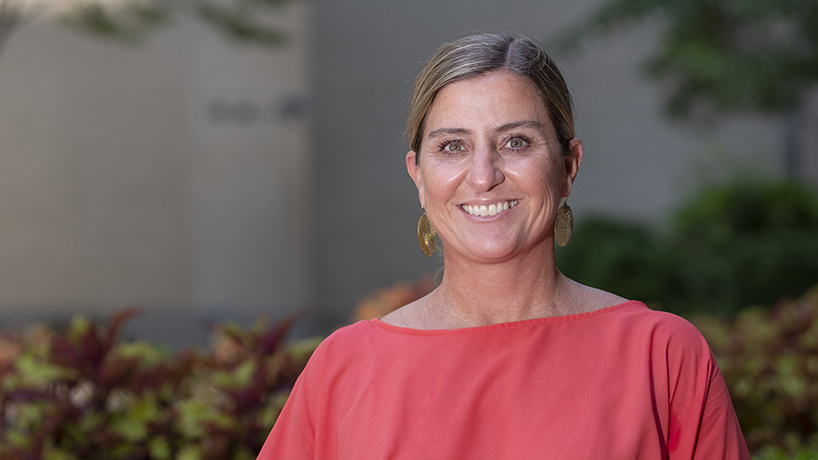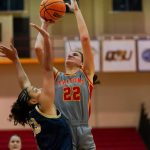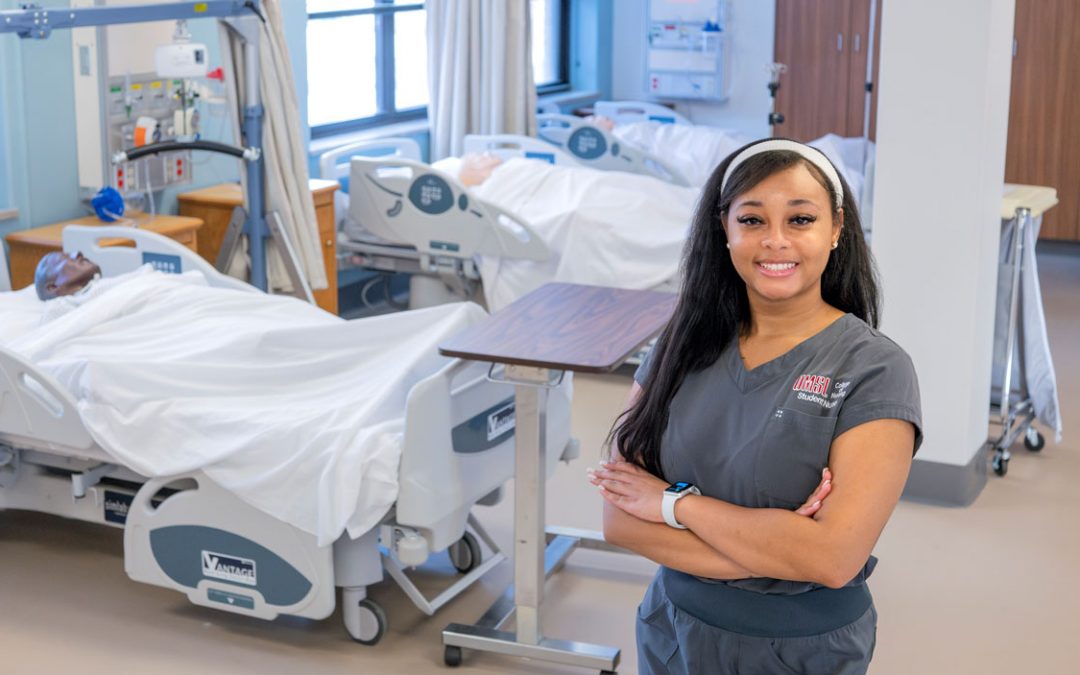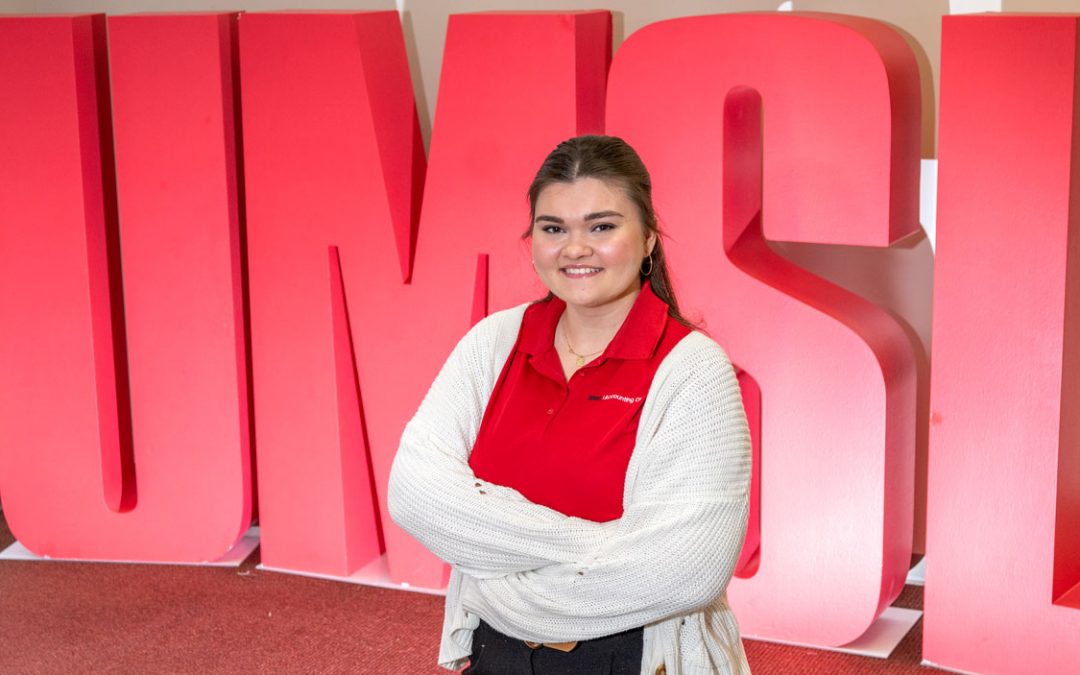
For her clinical scholarship project, DNP student Lila Kertz evaluated the effectiveness of the Severe Asthma Clinic for Children at the Washington University School of Medicine in St. Louis Division of Pediatric Allergy, Immunology and Pulmonary Medicine. Kertz started the clinic in 2014 in order to help the most severely affected children. (Photo by August Jennewein)
In 2000, Lila Kertz was working her first job as a nurse practitioner after graduating with her MSN from the University of Missouri–St. Louis when she noticed something unexpected: Asthma was widespread among her patients.
It was much more common, in fact, than the national average.
In 2004, she began working in the Washington University School of Medicine in St. Louis Division of Pediatric Allergy, Immunology and Pulmonary Medicine at St. Louis Children’s Hospital, eventually starting its Severe Asthma Clinic for Kids, known also as SACK.
Working at the clinic for 16 years, Kertz had ample opportunity to participate in research and education. That drove her to want to learn more, and she turned back to UMSL. This August, she completes that journey to graduate with her DNP.
For her DNP clinical scholarship project, Kertz decided to focus on evaluating something near and dear – the efficacy of SACK in improving asthma control and quality of life for its patients.
“Even from the start of the DNP program, I knew I wanted to do something with the severe asthma population because caring for children with severe asthma has become my passion,” Kertz said. “I think I’m one of the few pediatric nurse practitioners in the country that has had the opportunity to work with such a fragile, potentially complicated, high-risk group of patients in a specialized clinic.
“I was hopeful that evaluation of the data from our severe asthma database would help us, and others, better understand how to provide optimal care for the pediatric patient with severe asthma.”
in 2013, Kertz was struck by the notion that the hospital lacked a service for the most severe asthmatic patients. She wanted to figure out what factors contributed to those severe, uncontrolled cases and remedy them. Kertz approached her medical director and asked if she could start the clinic.
Kertz began by recruiting a physician, pediatric pulmonologist Katherine Rivera-Spoljaric. The two advocated for the creation of the clinic and did research on practices of existing clinics. Then they recruited from other specialties to round out the team, which ultimately included a pediatric allergist, RN, social worker, spirometry technician and asthma coaches.
“We developed a team to take care of the children and to do it in a systematic manner so that we were assessing our patients at every visit in a thoughtful way,” Kertz said. “We created the Severe Asthma Clinic for Kids patient assessment algorithm. We look at what medications each patient is receiving, co-morbidities associated with asthma and differential diagnoses of cough. We also focus on any potential barriers to care.
“These barriers, I believe, are often overlooked. That wasn’t the basis of my project, but we ultimately discovered that the majority of our patients had barriers to care, and addressing the barriers helped led to better asthma control.”
The visits in SACK are very different than a normal exam. For one, they’re much longer, lasting two hours for an initial evaluation where the patient and family meets the whole team, including a social worker and asthma coaches.
Since the clinic first opened in January 2014, Kertz has been collecting data from patient visits. Her first task for her DNP project was getting the data into a usable format.
She looked at data from January 2014 to January 2020, which comprised 144 individual patients ages 3 to 18 – 61 percent were Black, 29 percent were white and 10 percent mixed race; 55 percent were male and 45 percent female; 72 percent had Medicaid versus private insurance; and 78 percent lived in the greater St. Louis area.
Kertz wanted to see if patients treated in SACK experienced increases in asthma control and quality of life, so she looked at several factors, including the Pediatric Caregiver Quality of Life Questionnaire total score, the Asthma Control Test score, the change of medication refill rate and the number of patients with no barriers to care with each follow-up visit.
Working with a statistician, Kertz examined how those factors changed over time.
“The initial review of the data we analyzed was extremely impactful because we realized we’ve really made a difference for a lot of children,” she said. “We found that 65 percent of our patients reported barriers at the initial visit. After a barrier was identified, we addressed how to remove it. With each subsequent visit, the number of barriers decreased.”
Furthermore, caregiver quality of life, asthma control and medication refills all increased with each visit. She believes that to be a direct result from removing barriers.
Kertz was blown away when she realized just how positive her findings would turn out to be.
“It was pretty awesome,” she said. “I’m proud to be part of such an incredible team and am grateful that we have been able to help these children and their families. Together we’ve made a huge difference for the majority of the patients for whom we’ve cared, which is just incredible.”
Though this project – along with her DNP – is over, Kertz isn’t finished with research. She’s hoping next to examine the relationship between better asthma control and school attendance in the pediatric patient with severe asthma.
Kertz is extremely grateful to her team but also to her UMSL advisory committee, especially DNP Director Laura Kuensting, who helped draw Kertz to UMSL in the first place. She’s both glad and sad to be done with the program and is already thinking about a PhD sometime in the future – maybe.
“The 2 1/2 years flew by,” she said. “I enjoyed the work. It taught me the importance of being a leader in the nursing community. This project helped me better understand the needs of my patients. Though my goal coming back to school wasn’t necessarily to learn how to become a better nurse practitioner, ultimately I believe this program has taught me how to better care for my patients.”














